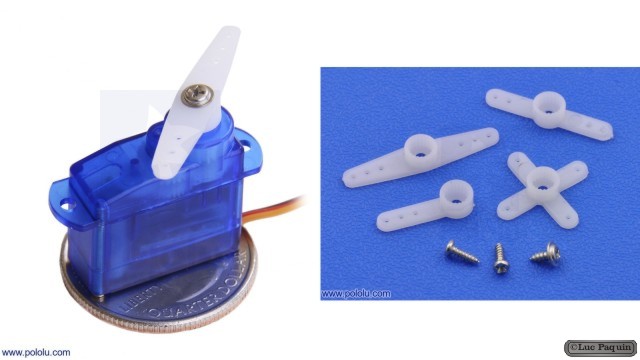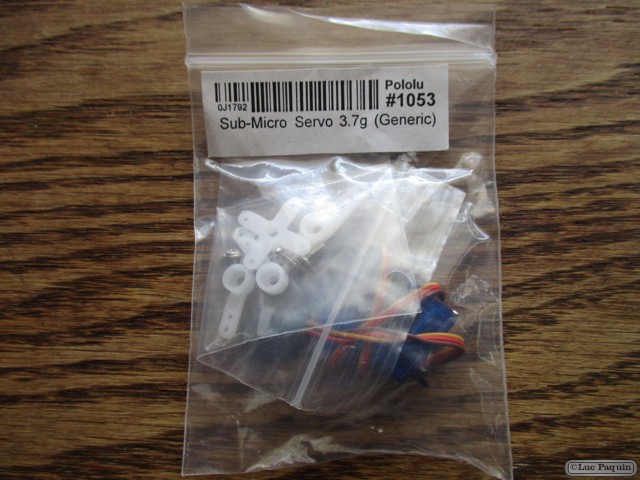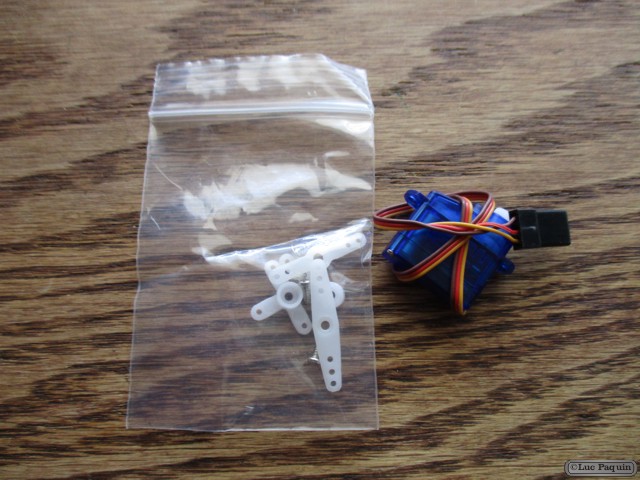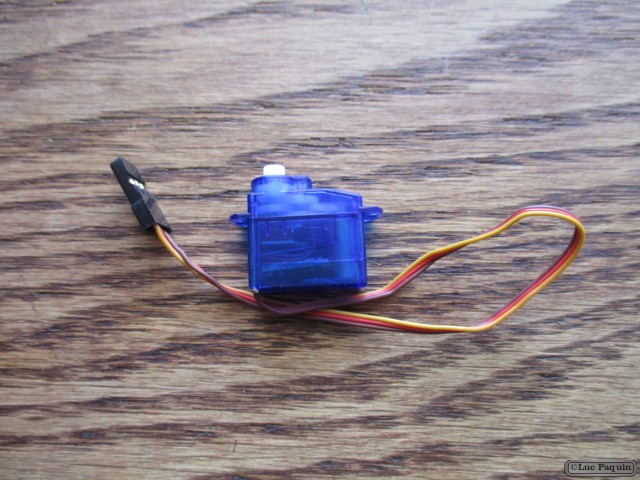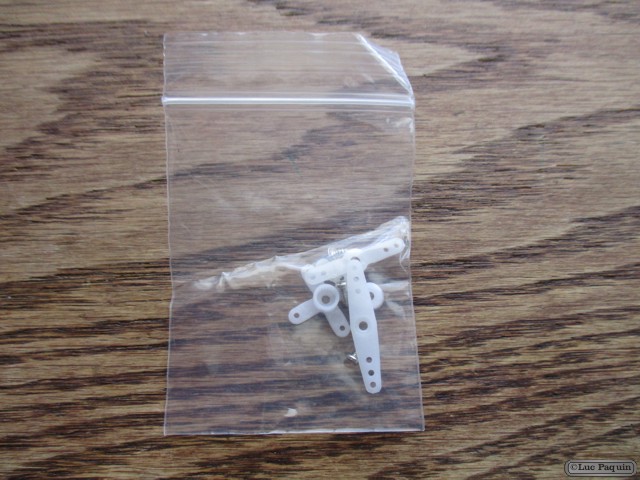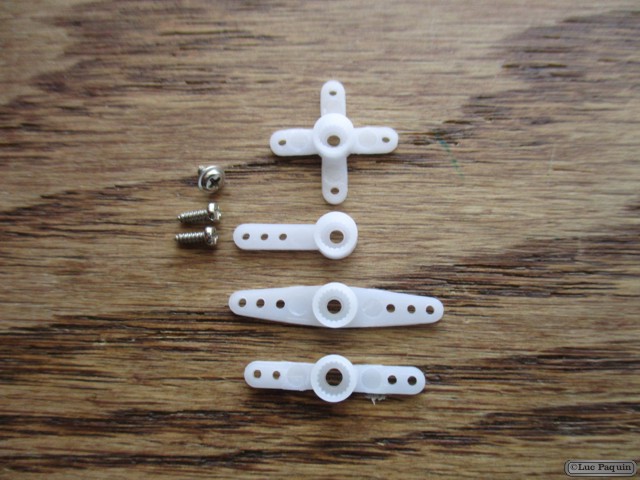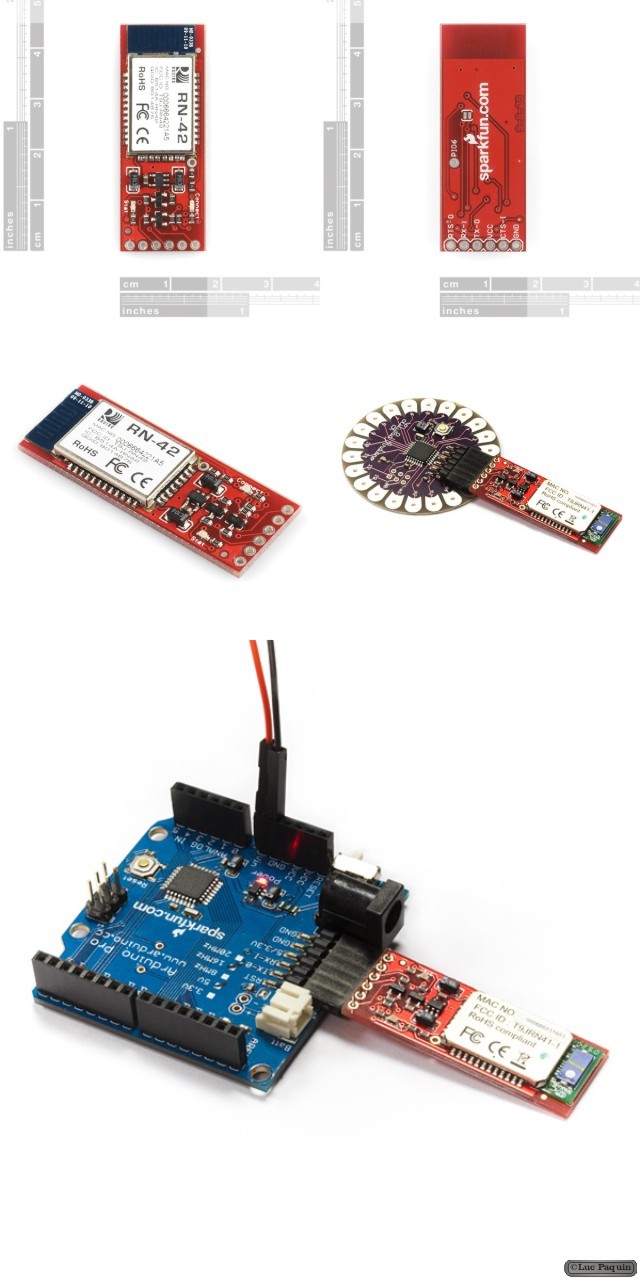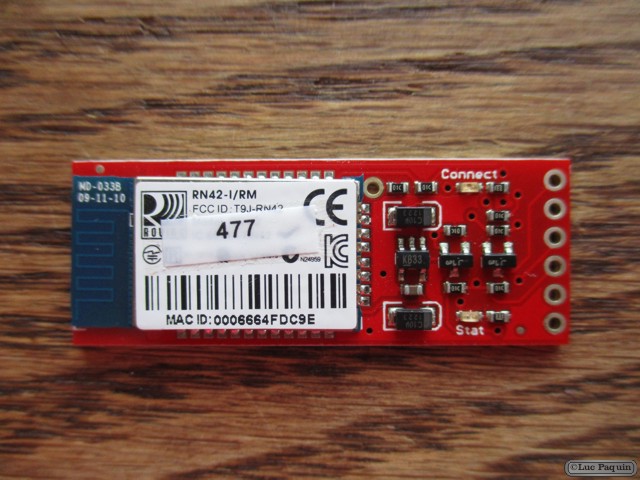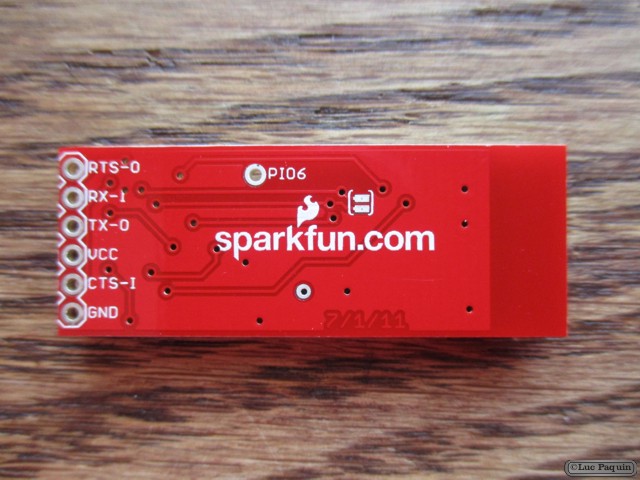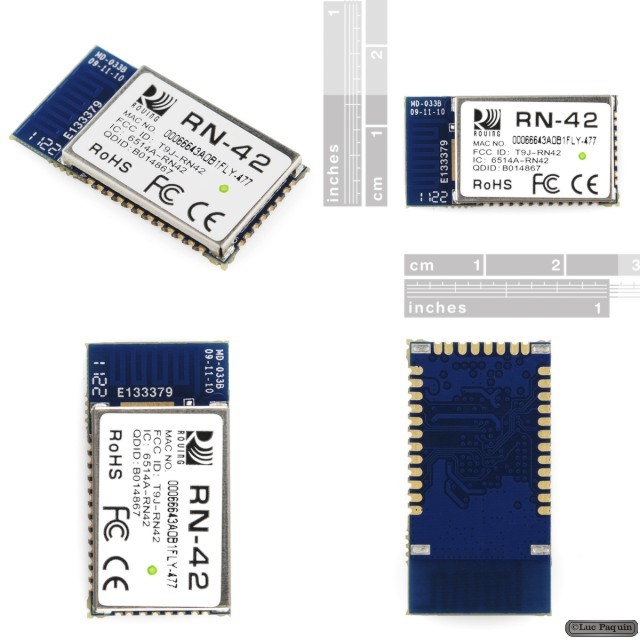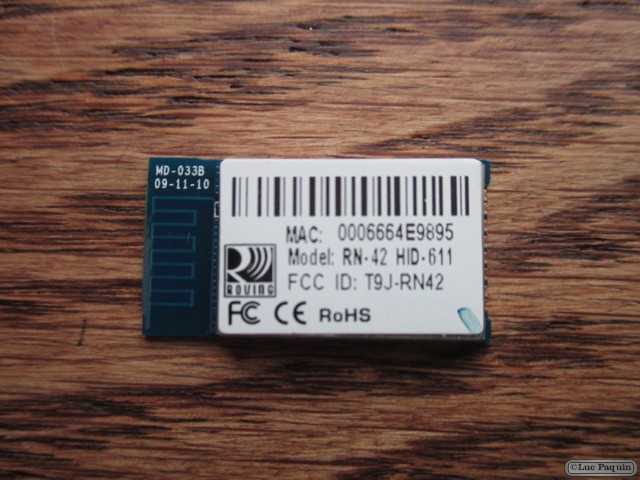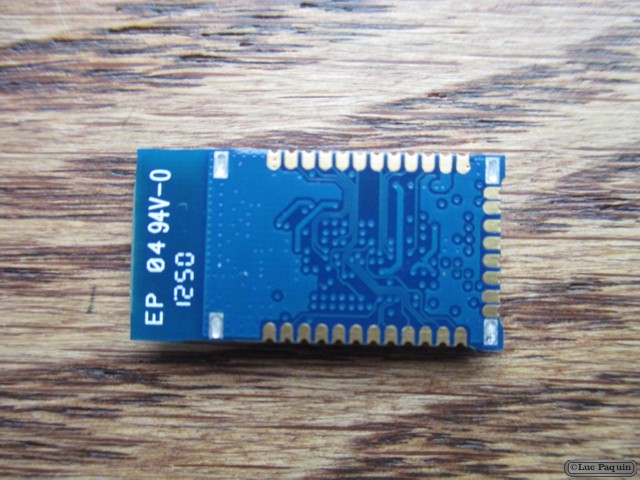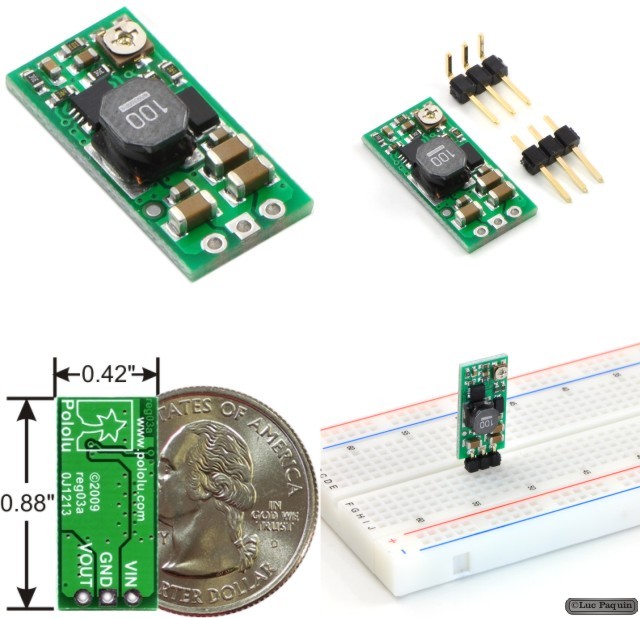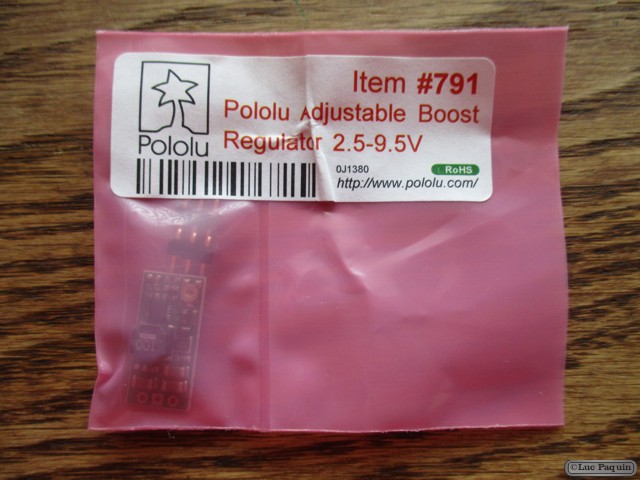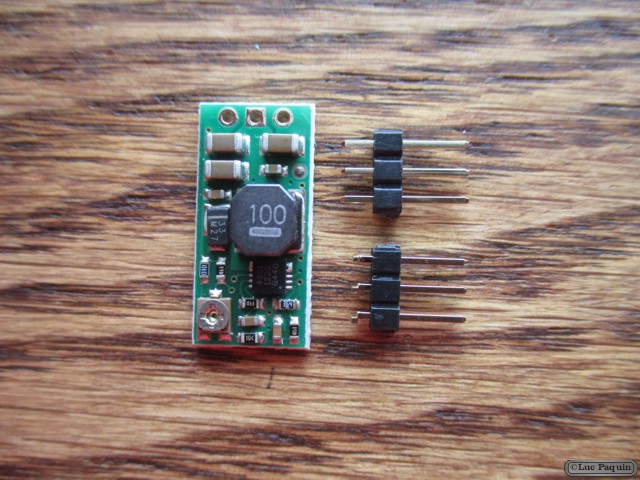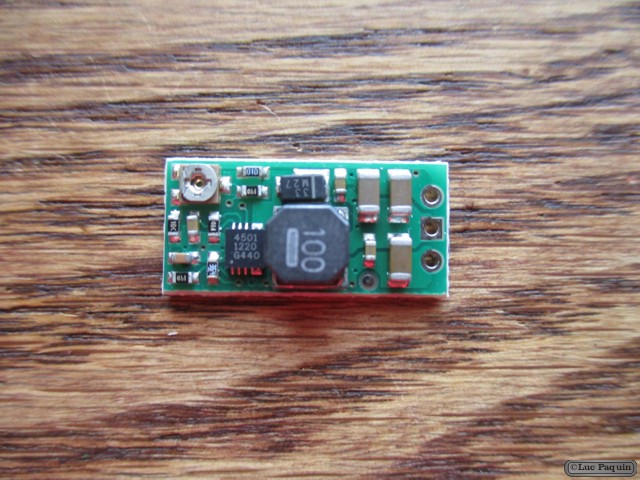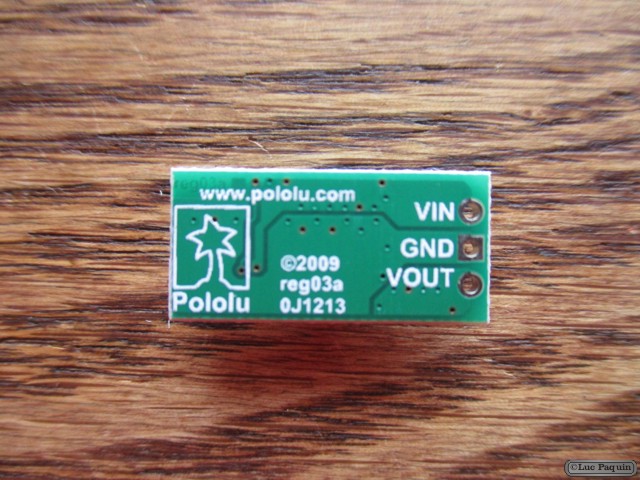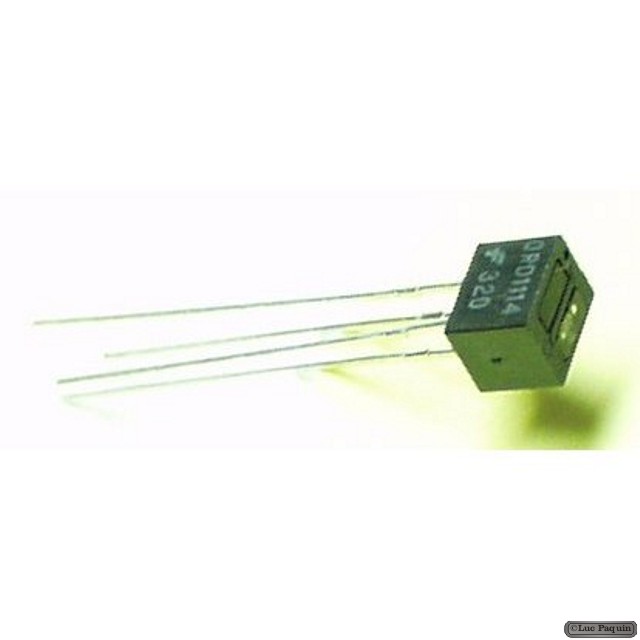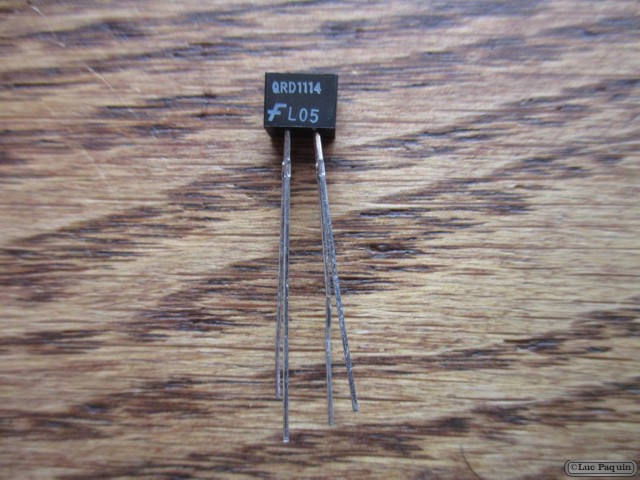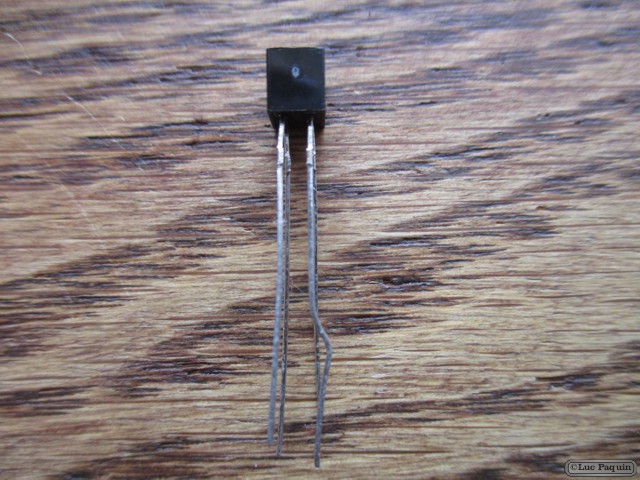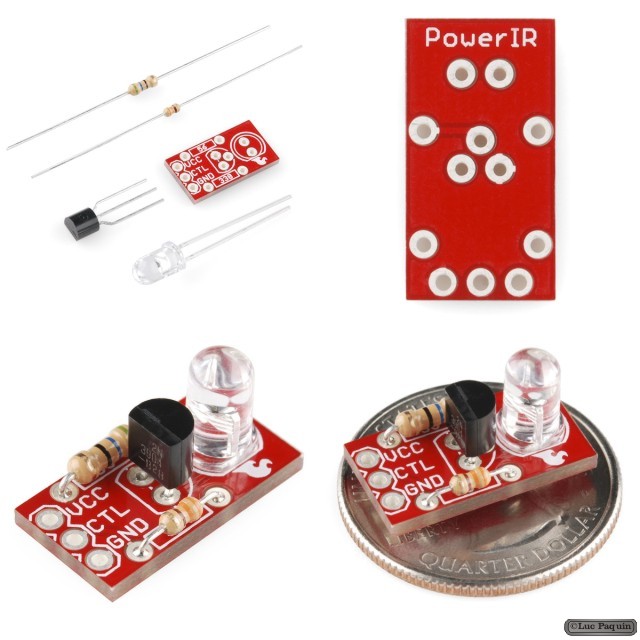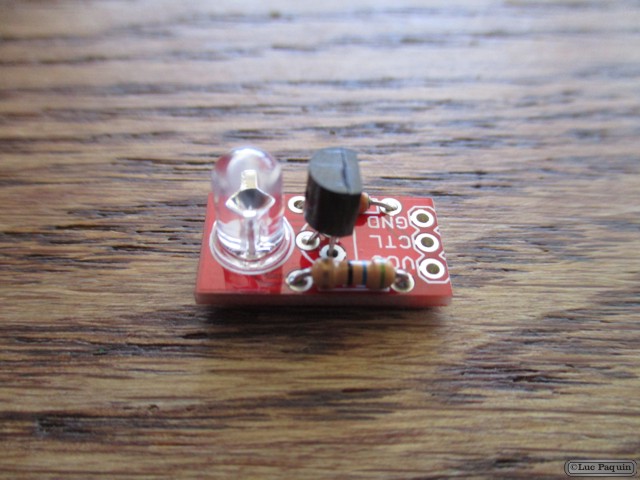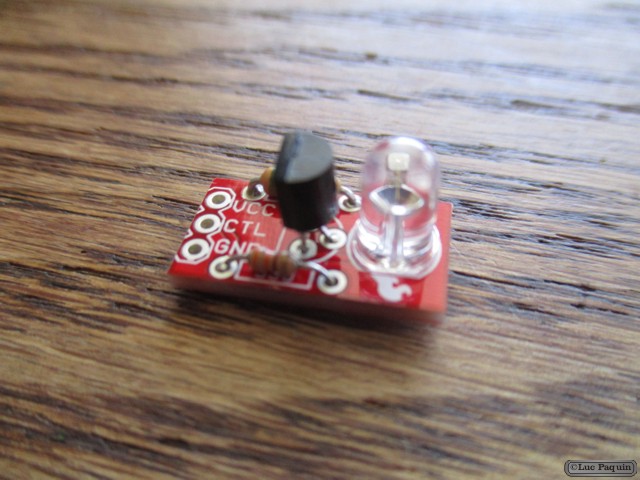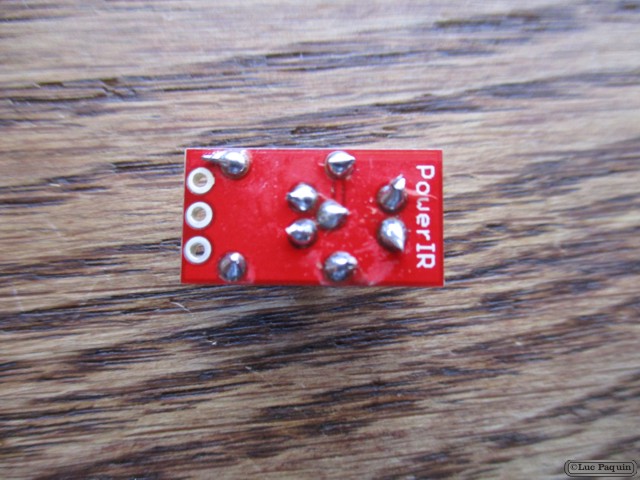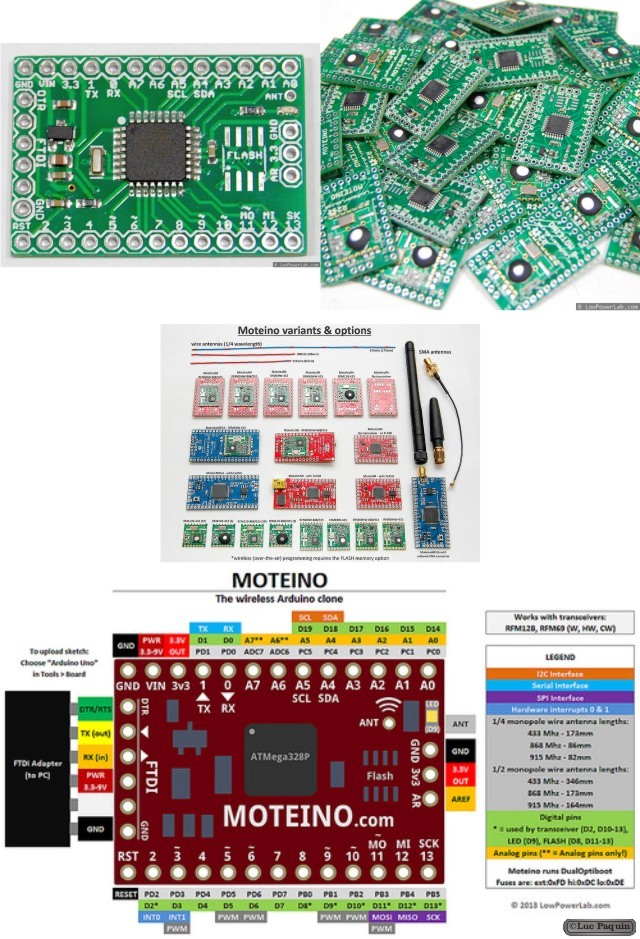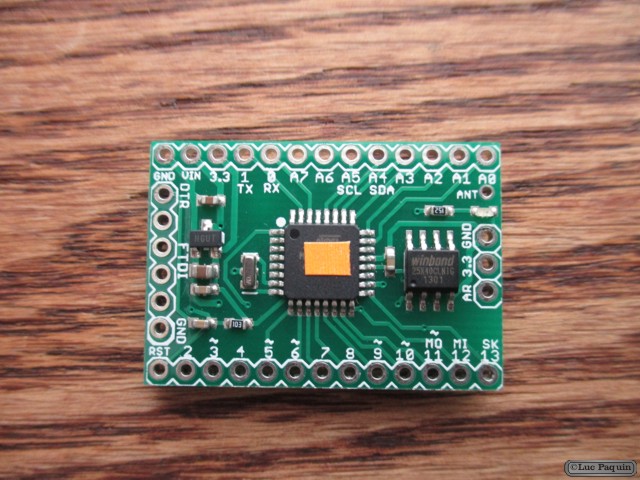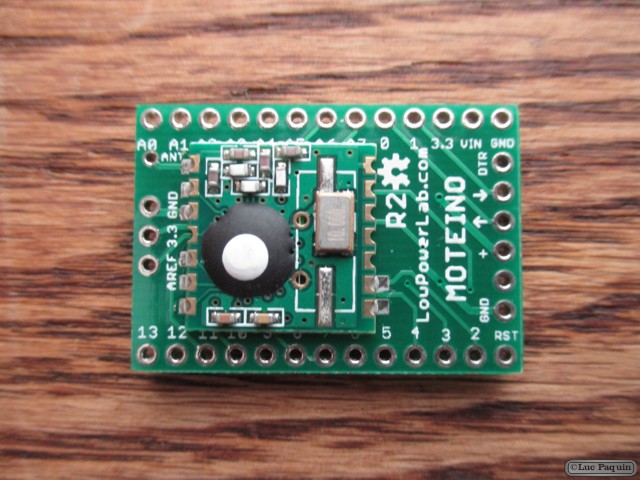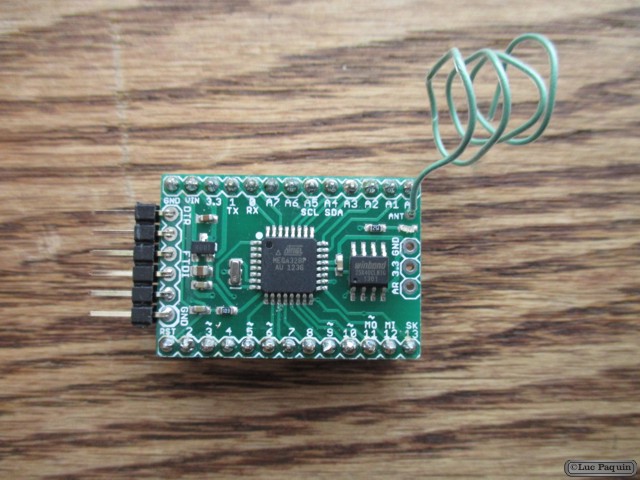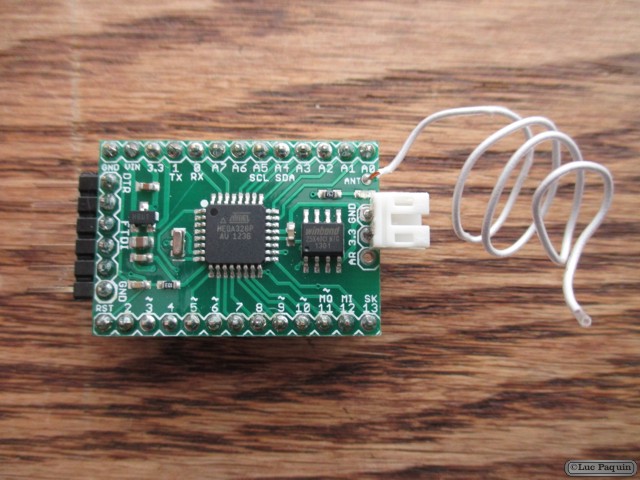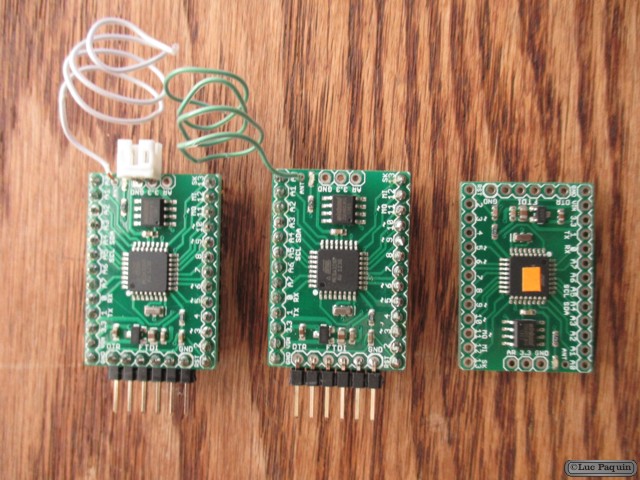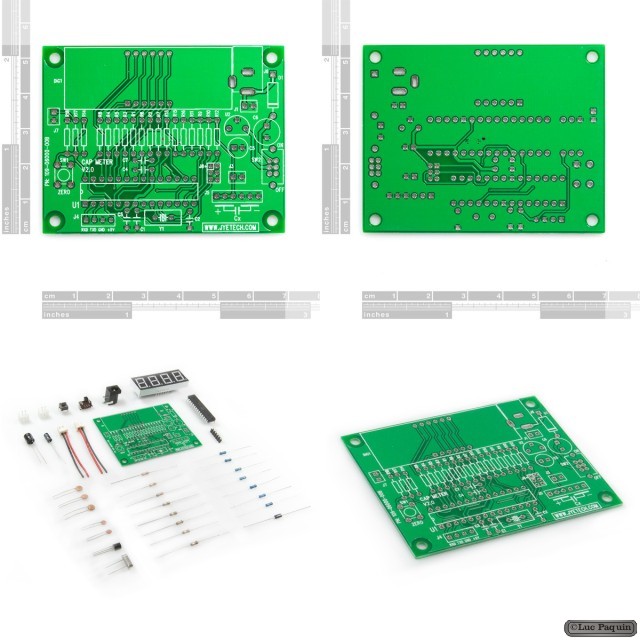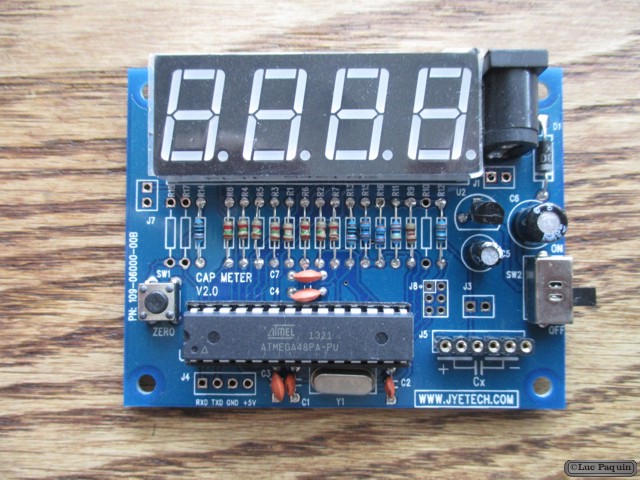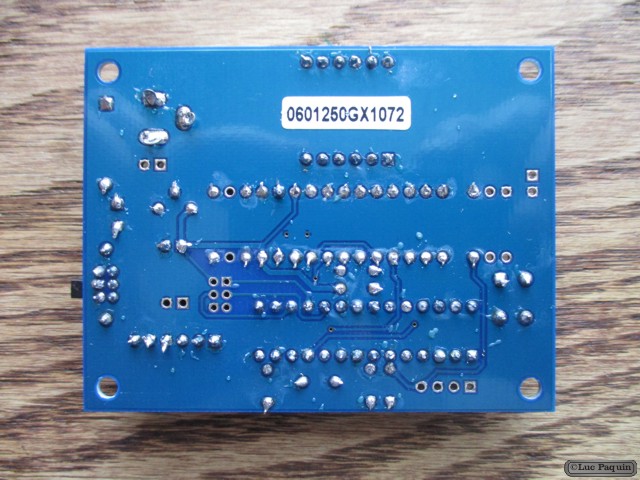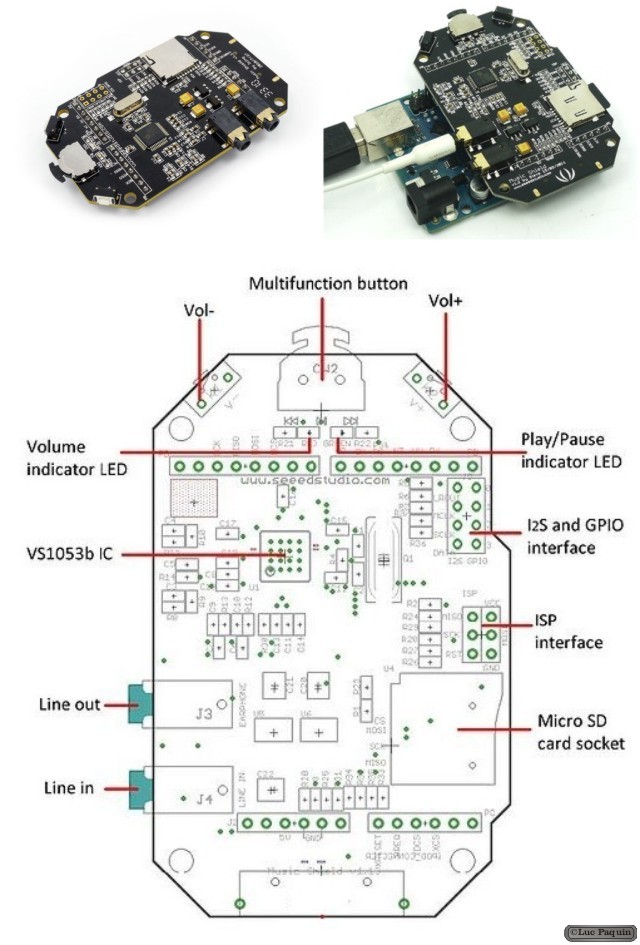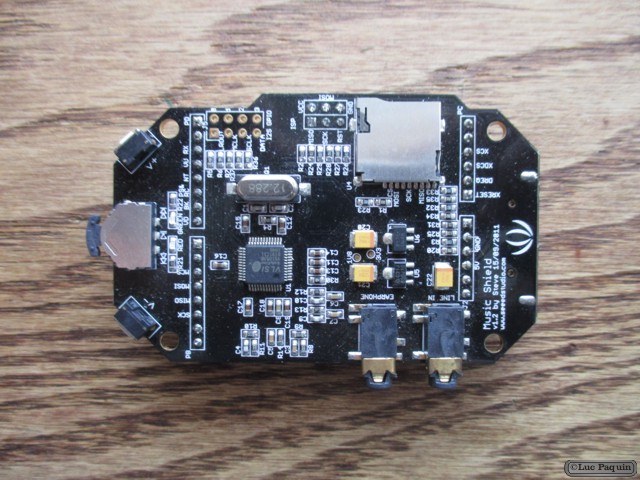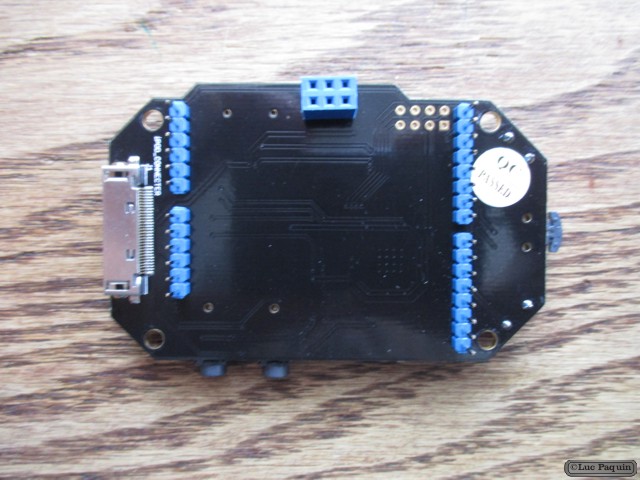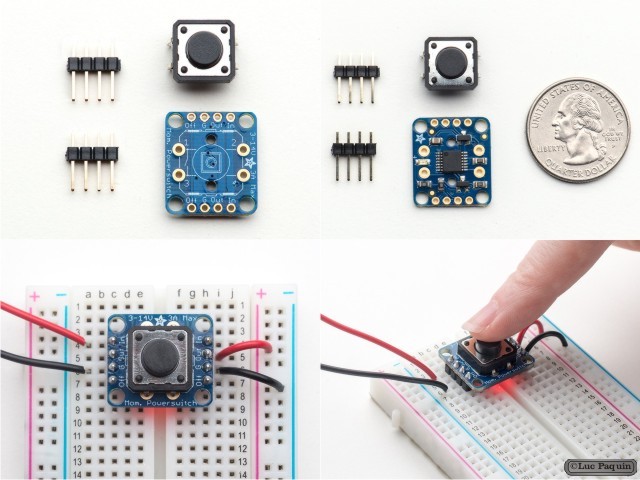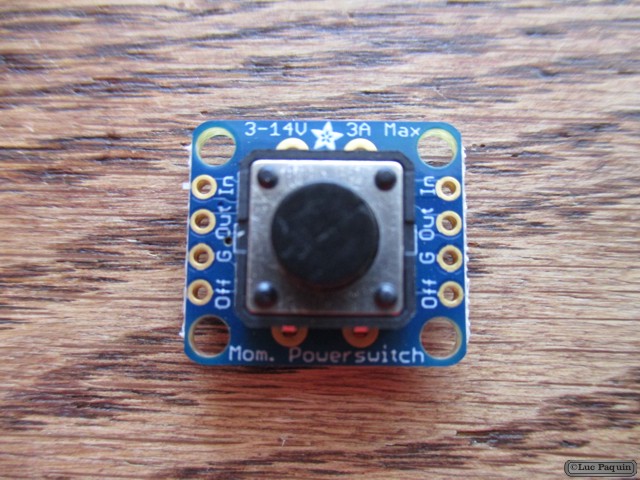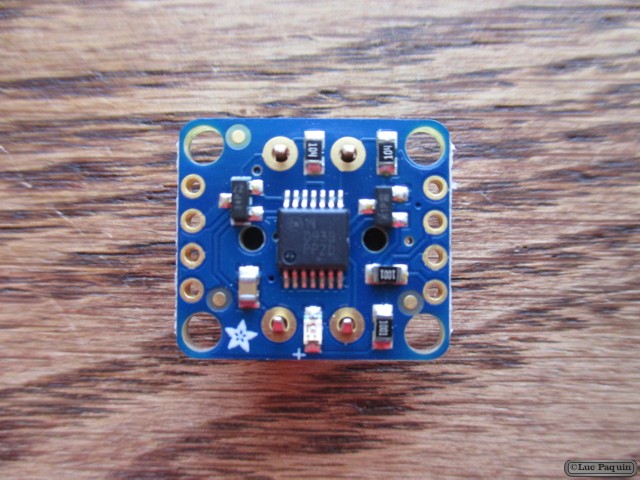Pololu – Sub-Micro Servo 3.7g (Generic)
Pololu: 1053
This generic sub-micro servo is one of the lightest servos we carry, weighing just 3.7 g (0.13 oz) without the lead. It is intended for use between 4.8 and 6 V (i.e. with 4- or 5-cell NiMH or NiCD battery packs). Servo horns and associated hardware are included.
Key specs at 6 V: 0.07 sec/60°, 6 oz-in (0.4 kg-cm), 3.7 g (0.13 oz).
Description
This tiny servo is great for applications such as:
- Building a miniature walking robot.
- Creating grippers or other mechanisms for small robots.
- Moving control surfaces on small model aircraft.
It measures just 20.2 x 8.5 x 20.2 mm (0.80″ x 0.33″ x 0.80″) and weighs only 3.7 g (0.13 oz) without its 15 cm (6″) lead. The lead is terminated with a standard “JR”-style connector, which is Futaba-compatible. The distance between the two mounting holes is 23.5 mm.
The servo ships with additional servo horns.
Specs
Dimensions
- Size: 20.2 x 8.5 x 20.2 mm
- Weight: 3.7 g
General Specifications
- Digital: No
- Speed @ 6V: 0.07 sec/60°
- Stall torque @ 6V: 6 oz·in
- Speed @ 4.8V: 0.09 sec/60°
- Stall torque @ 4.8V: 4 oz·in
- Lead length: 6 in
- Hardware included: Yes
Don Luc
SparkFun – Bluetooth Mate Silver
SparkFun: WRL-10393
Description: The Bluetooth Mate is very similar to our BlueSMiRF modem, but it is designed specifically to be used with our Arduino Pros and LilyPad Arduinos. These modems work as a serial (RX/TX) pipe, and are a great wireless replacement for serial cables. Any serial stream from 2400 to 115200bps can be passed seamlessly from your computer to your target.
Bluetooth Mate has the same pin out as the FTDI Basic, and is meant to plug directly into an Arduino Pro, Pro Mini, or LilyPad Mainboard. Because we’ve arranged the pins to do this, you cannot directly plug the Bluetooth Mate to an FTDI Basic board (you’ll have to swap TX and RX).
The RN-42 is perfect for short range, battery powered applications. The RN-42 uses only 26uA in sleep mode while still being discoverable and connectable. Multiple user configurable power modes allow the user to dial in the lowest power profile for a given application. If you need longer range, check out the Bluetooth Mate Gold.
The Bluetooth Mate has on-board voltage regulators, so it can be powered from any 3.3 to 6VDC power supply. We’ve got level shifting all set up so the RX and TX pins on the remote unit are 3-6VDC tolerant. Do not attach this device directly to a serial port. You will need an RS232 to TTL converter circuit if you need to attach this to a computer.
Unit comes without a connector; if you want to connect it to an Arduino Pro, we’d suggest the 6-pin right-angle female header.
Note: The hardware reset pin of the RN-42 module is broken out on the bottom side of the board. This pin is mislabeled as ‘PIO6’, it is actually PIO4. Should you need to reset the Mate, pull this pin high upon power-up, and then toggle it 3 times.
Features:
- Designed to work directly with Arduino Pro’s and LilyPad main boards
- FCC Approved Class 2 Bluetooth® Radio Modem!
- Low power consumption: 25mA avg
- Hardy frequency hopping scheme – operates in harsh RF environments like WiFi, 802.11g, and Zigbee
- Encrypted connection
- Frequency: 2.4~2.524 GHz
- Operating Voltage: 3.3V-6V
- Serial communications: 2400-115200bps
- Operating Temperature: -40 ~ +70C
- Built-in antenna
Dimensions:
- Board: 1.75×0.65″
Don Luc
SparkFun – Bluetooth SMD Module – RN-42-HID
SparkFun: WRL-10823
Description: This is the same Roving Networks Bluetooth module that you already know and love, but it comes firmware-configured for the HID protocol. HID, or “Human Interface Device”, is the communication protocol used for computer peripherals such as keyboards, mice and joysticks. This makes the RN-42-HID a simple and powerful tool for creating wireless peripheral devices which can be universally recognized and used without the installation of special drivers. The manual included in the documentation below goes into more detail about the Bluetooth HID profile.
The RN-42 is perfect for short range, battery powered applications. The RN-42 uses only 26uA in sleep mode while still being discoverable and connectable. Multiple user configurable power modes allow the user to dial in the lowest power profile for a given application.The RN-42 is even FCC and Bluetooth SIG certified making it a complete embedded Bluetooth solution.
Features:
- Fully qualified Bluetooth module
- FCC Certified
- Over air data rate of 721kbps to 2.0Mbps
- Low power sleep mode
- 3.3V operation
- Status pin
- Bluetooth Technology v2.0 compatible
- Class 2 power output
Don Luc
Pololu – Adjustable Boost Regulator 2.5-9.5V
Pololu: 791
This powerful, adjustable boost regulator can generate an output voltage as high as 9.5 V from an input voltage as low as 1.5 V, all in a compact, 0.42? x 0.88? x 0.23? package. A trimmer potentiometer lets you set the boost regulator’s output voltage to a value between 2.5 and 9.5 V.
Overview
The Pololu adjustable boost regulator is a very flexible switching regulator (also called a switched-mode power supply, SMPS, or DC-to-DC converter) that can generate voltages higher than its input voltage. We offer two adjustable ranges: approximately 2.5 V to 9.5 V and 4 V to 25 V. The output voltage can be set using the trimmer potentiometer in the upper-right corner of the board. The input voltage range is 1.5 V to 16 V (the input voltage should be kept below the output voltage). The integrated 2 A switch allows for output currents high enough to drive small motors, as in our 3pi robot, and allows large voltage gains, such as obtaining 24 V from two NiMH or NiCd cells.
Some example applications include:
- Powering 5 V or 3.3 V systems from lower-voltage batteries
- Powering 5 V subsystems (e.g. sensors) in lower-voltage (e.g. 3.3 V) systems
- Achieving consistent actuator operation when powered by fluctuating batteries
- Powering high-brightness LEDs or a large number of LEDs in series
Note: For high-volume applications, this product can be customized with fixed output voltages ranging from 2 V to 30 V.
Feature Summary
- Input voltage: 1.5 V to 16 V
- Output adjustable from 2.5 V to 9.5 V or 4 V to 25 V
- 750 kHz switching frequency
- 2 A switch (and input) limit
- Integrated over-temperature and over-current shutoff
- Typical efficiency of 80-90% when doubling voltage and with 100-500 mA output
- Small size: 10.7 x 22.4 x 5.8 mm (0.42″ x 0.88″ x 0.23″)
- Weight without header pins: 1.6 g (0.06 oz)
Don Luc
SparkFun – Optical Detector / Phototransistor – QRD1114
SparkFun – Max Power IR LED Kit
SparkFun: KIT-10732
Description: Infrared LEDs are awesome. Along with an IR receiver they can be used for remote control and even basic remote data communication. The only problem is that your Arduino won’t drive them to their full potential. The SparkFun Max Power IR LED kit solves this problem by providing you with everything you need to drive a 950nm IR LED properly. Simply solder together this easy through-hole kit and you can switch the LED using a transistor.
Once the kit is assembled, simply provide it with voltage (5V), ground, and connect the CTL pin to a digital pin on your Arduino, and you can drive this kit just like a normal LED. Although the LED won’t be visible to your naked eye, you can use a video camera, cell phone camera, or digital camera to see if the LED is working properly.
Don Luc
LowPowerLab – Moteino
LowPowerLab: Moteino R2
What is Moteino?
Moteino is a low cost low-power open-source wireless Arduino compatible development platform based on the popular ATMega328 chip used in traditional Arduinos, making it 100% compatible with the Arduino IDE (programming environment). Regular Moteino does not include an onboard USB-Serial converter (like traditional Arduinos), instead you need to use an external FTDI adapter to load sketches, the advantages being lower cost, smaller size. However there is a MoteinoUSB variant that the serial converter onboard. They are compatible with any other Arduino clones that use the popular HopeRF RFM69 transceiver, or the older RFM12B. Moteino also comes with an optional SPI flash memory chip for wireless programming, or data logging.
Soldering antenna and headers
Moteinos come without any soldered headers or antennas. Without the wire antenna the range will be only a few feet, and while this is OK for testing purposes it’s recommended that an antenna be soldered before real application use of the transmitter. The provided wire monopole antenna has to be soldered to the “ANT” pin hole (just above the FLASH chip) to achieve any usable range. Regular Moteinos will come with a 1×6 male header that you have to solder before you can power it and upload sketches through an FTDI Adapter.
Specifications for Moteino R2
- Microcontroller: ATmega328
- Transceiver: RFM69 W/HW/CW, RFM12B
- Transceivers frequencies: 434Mhz, 868Mhz (EU), 915Mhz (US, Australia, etc.)
- Input Voltage: 3.5V-16V (up to 12V recommended)
- Operating Voltage: 3.3V (regulated by MCP1703 on most recent Moteinos)
- Digital I/O Pins: 14+6 (6 PWM capable: marked with “~” symbol)
- Analog Input Pins: 8 (2 analog-only pins more than regular Arduinos)
- DC Current per I/O Pin: 20 mA
- Flash Memory: 32 KB of which 1 KB used by DualOptiboot bootloader
- SRAM: 2 KB
- EEPROM: 1 KB
- Clock Speed: 16 MHz
MISC
- Onboard LED on pin D9 instead of D13 (D9 is PWM!)
- RFM12B or RFM69 SPI-CS on D10
- FLASH SPI-CS on D8
- A6 and A7 are analog pins only, cannot be used as digital pins
Don Luc
SparkFun – Capacitance Meter DIY Kit
SparkFun: KIT-09485
Description: This kit includes everything you need to make your very own capacitance meter, able to measure caps anywhere between the range of 500uF to 1pF. Many multimeters are able to measure capacitance, but they’re rarely as precise as a dedicated capacitance meter. Not only does this product provide a great chance to hone your soldering skills, but you also come out with an accurate, fully functional, capacitance measuring tool.
Assembly is very straightforward, and all components are through-hole. You’ll get a chance to solder a wide range of components such as resistors, seven segment LEDs, a 28-pin ATmega48 microcontroller, and more!
An 8-16VDC power supply is required, but not included.
Features:
- About 1% accuracy, <2% error
- Measuring range: 1pF – 500uF
- Automatic range switch
- Zeroing available
- Real time serial output of measurement read-outs with time stamp
- Low cost and easy to build
- Power supply voltage: 8-16VDC
- Power supply current: <30mA
Don Luc
Seeed Studio – Music Shield V1.2
Seeed Studio: Music Shield V1.2
Introduction
The Music Shield is a professional audio codec.It can work with Arduino, Seeeduino, Seeeduino Mega and Arduino Mega. It is based on VS1053b IC, and can play a variety of music formats stored on MicroSD cards with Seeed the provided Arduino Library.
Note: Recording is only supported on Seeeduino Mega and Arduino Mega for now.
Features
- Arduino,Seeeduino, Arduino Mega, and Seeeduino Mega compatible
- 2 control-push buttons and 1 knob switch
- Plays music from micro SD cards Decodes: MP3, WAV, MIDI, Ogg Vorbis
I2S interface for external DAC - Headphone/Line Out for playback
- Line In for recording in OGG format
- Excellent sound quality with ±1dB Frequency Response
- FCC verification
Usage – Hardware Installation
Insert the Micro SD card and the earphone; Plug the Music Shield onto the Arduino/Seeeduino; Connect the board to PC using USB cable.
Don Luc
Adafruit – Push-button Power Switch Breakout
Adafruit: 1400
Description
The Adafruit Push-button Power Switch is a tidy little design that lets you control a DC power source using an everyday tactile button. The breakout uses a latching analog circuit that is triggered by a push of the button. Press once to turn on, then press again to turn off. The circuit uses a 3A P-FET to connect and disconnect the IN pin to the OUT pin. Works great from 3V to 14VDC and up to 3A (although the FET gets a little toasty at continuous 3A draw) yet has only 0.5uA quiescent current draw.
Using it is easy: connect the power source to Ground and IN, then the load from Ground to OUT. We include a 12mm tactile switch that works well but you can solder in your own switch as well. Press the button (or short the button pins) to alternate between on or off. A on-board red LED will light up when active so you know its working. There’s a fourth KILL pin, which you can use to turn off the load and/or keep it off even if the button is pressed. When 1 or more volts is applied it will instantly turn off the FET. This allows your project to turn itself off.
Comes with a assembled & tested bread-board friendly breakout board with four mounting holes, a 12mm tactile button, and some 0.1″ male header you can solder to the board to plug it into a breadboard.
The power switch is an elegant way to control power to your project, but there are some things to keep in mind: since there is a pass FET, this is only for 3-14V DC voltages. This is not a mechanical switch so there is no air-gap isolation. There is a ‘body diode’ in the pass FET so if the load has a voltage on it that is higher than the input voltage, current will flow back to the input. There is built-in debouncing but very bouncy switches can be annoying as they will turn on and off fast instead of latching.
Technical Details
- Dimensions: 20.51mm / 0.8″ x 17.75mm / 0.69″ x 2.66mm / 0.1″
- Height with Switch: 8.69mm / 0.34″
- Weight: 2.6g
- MC14093 Datasheet (the NAND gate used) P-Channel Pass MOSFET
Don Luc
